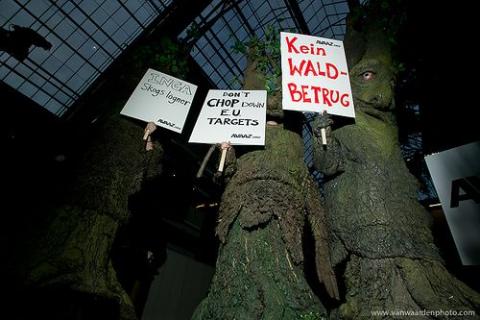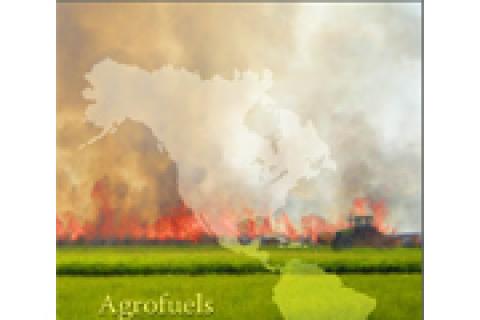Everywhere in the world where large-scale monoculture tree plantations are established, their arrival is preceded by a series of promises used to trick the local population into welcoming these ventures. After a few years have gone by, people start to realize that these promises are not being kept, and that things are actually even worse than before. But by then it is too late. The companies have taken over the area and set up their plantations.
Other information
The term “planted forests” was coined by FAO with the aim of placing tree plantations on the same level as forests. Gradually it has spread and been assimilated by many international and national organizations, while multinational corporations from the forestry sector have taken advantage of this to emphasize the matching, as was evident at the latest World Forestry Congress, held in Argentina in October 2009.
The UN Climate Change Convention in Copenhagen presents itself to the world as if it were truly tackling the major global crisis of climate change, with thousands of government delegates and even a hundred or so presidents and heads of state joining the meeting.
By Global Justice Ecology Project
By Rebecca Sommer
At the Climate Change Conference in Copenhagen, Indigenous participants are increasingly concerned about REDD.
REDD stands for “Reducing Emissions from Deforestation and Degradation”. The idea, as agreed by United Nations climate negotiators in Bali in 2007, is that because preserving forests is good for the climate, governments, companies or forest owners in the South should be rewarded for keeping them standing instead of cutting them down.
According to Wikipedia, “a circus is commonly a travelling company of performers that may include acrobats, clowns, animals, trapeze acts, hoopers, tightrope walkers, jugglers, unicyclists and other stunt-oriented artists.”
A team of biologists and climate modellers at NASA have come up with a very “practical” alternative to phasing out fossil fuels. Their plan is to plant massive blocks of fast growing trees –for example eucalyptus- in the deserts of the Sahara and Australian outback. Lack of water? No problem! The trees would be watered by seawater treated by a string of coastal desalination plants and channelled through a vast irrigation network. Easy.
Some jugglers of the climate circus are tossing up charcoal to catch it again but now with a fancy name. The proposal of turning residues into fine-grained charcoal and ploughing billions of tonnes of it into the soil every year convert charcoal into “biochar”.
Now come the acrobats. The Copenhagen Consensus Centre think-tank is working hard to weigh really true solutions to altering the alterated climate. Let’s see.
Edited by Richard Jonasse, PhD.
Institute for Food and Development Policy, 2009
Download as pdf
There is nothing like creating a problem for finding a good business opportunity . Or at least this is so for seasoned business men and women. It is thus that behind wars one can easily find the arms business. Behind citizen insecurity -largely resulting from social and economic inequity- is the business of security: insurance monitoring systems, bars, alarms and heavy-handed “saviour” politicians. Behind disease is the “health” business: the drug industry and corporate medical power.
There is no doubt that public opinion has become aware of the climate change issue. However, for most people this is but a headline in the newspapers and they tend to think that although this is in fact a major problem, there is no need to worry about it because the UN is working to solve it and that surely science will invent something to prevent it from happening.


